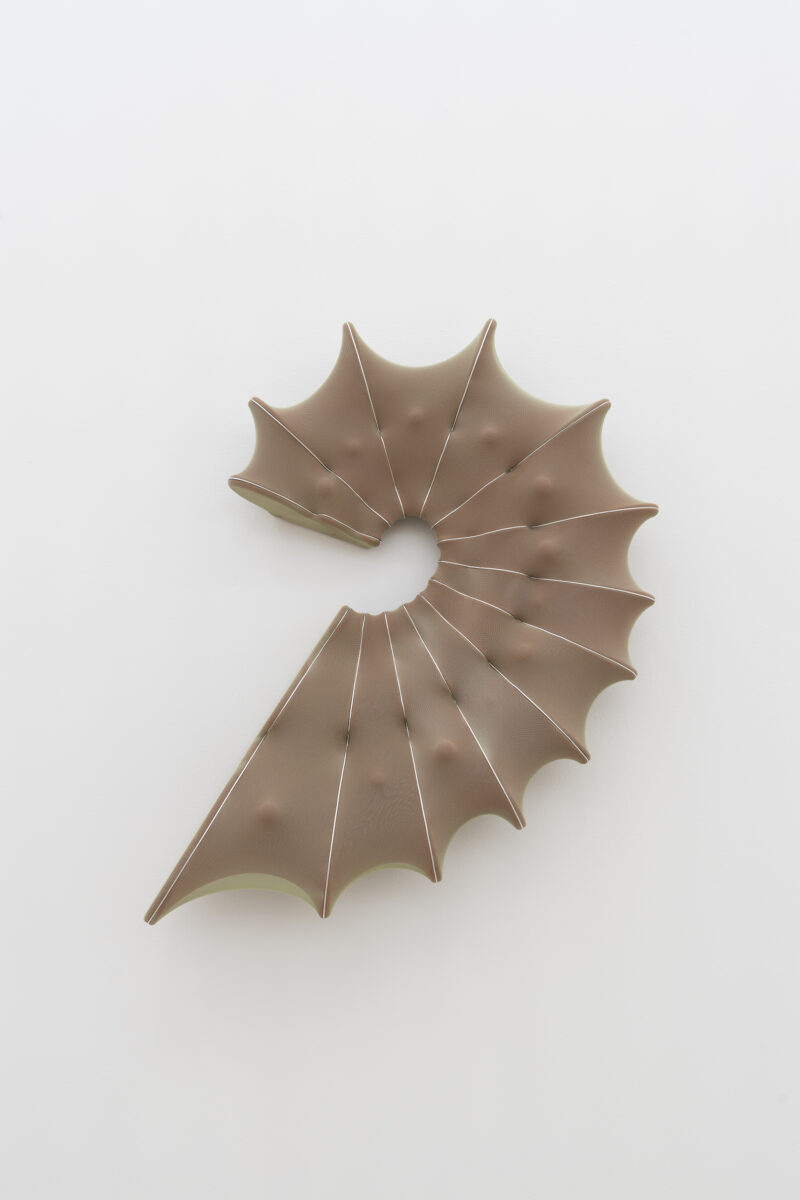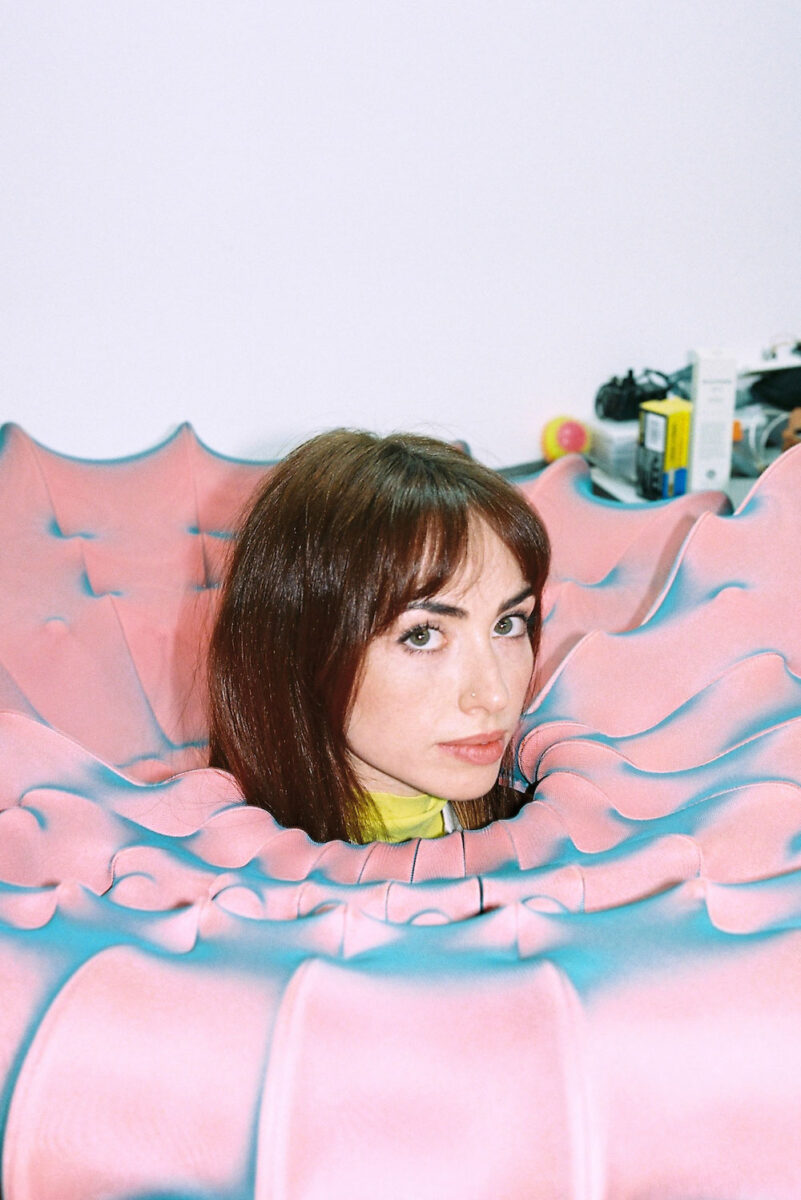Grace Woodcock
Through combining experimental upholstery with 3D computational design, London-based artist Grace Woodcock creates soft sculptures, wearables and furniture intended to give tangible form to gravitational and orbital forces that act upon our bodies. Positioned in dialogue with the deep past, our experience of the present and the aesthetics of speculative or retro futures, Woodcock’s practice is built upon a question: namely, what does it mean to exist on a planet that is rotating uncontrollably in space.
She is particularly interested in recent reports suggesting that these forces are in flux; as temperatures rise and the polar ice caps melt, the distribution of mass on earth will change resulting in shifts in its axis and increasing the speed and incline of its rotation. Through her practice, Woodcock explores the potential impacts of these changes on all facets of existence including fungal networks, the chemical signals forests use to communicate and weather maps of storm progressions. Avoiding making grand claims about our planetary future, Woodcock merely intends to deepen the viewer’s awareness of the overarching forces that dictate the shape of our reality.
Currently represented by Castor Gallery, Woodcock will present her second solo exhibition with the gallery during Frieze week, building on her inclusion in recent group exhibitions with Alice Black Gallery, London; BeAdvisors, London; Newchild Gallery, Antwerp; Contemporary Sculpture Fulmer, Fulmer and The Artist Room, London.
1)In what ways does your practice look to the future?
I engage with emerging research fields such as microbiology and ecology, and am interested in how contemporary research often exposes how little we currently know about our bodies and the world.
This notion of the potential unknown is also what I find compelling about science fiction and Space Age design; my work draws visual inspiration from 1960’s architecture and design, which was itself informed by the era’s energetic optimism and pursuit of the unknown.
On the other hand, I am also interested in speculative visions of the future, in particular the eerie experience of reaching a time period that was previously immortalised in fiction as ‘the future’ – for example, Octavia Butler’s climate-dystopia ‘The Parable of the Sower’ was written in 1993 (the year I was born) and set in 2024, or Blade Runner which aired in 1982 and was set in 2019.
2)How might your work be considered a reflection of our times?
Influenced by both biology and science fiction, my practice questions what it means to have an intelligent, sensing body. My sculptures sometimes appear as extensions of the body and are designed to incarnate a bodily sensation or the memory of a feeling. My work considers our body’s capacity to feel and understand itself and the conditions within which it lives – our sense of interoception (the sensation of our internal state and of the bodily processes happening within us) and of proprioception (the sensation of our body’s position and movement through space).
My pieces on display in Modern Forms, ‘Whorl’ and ‘Siphon:Surround’, both stem from my research into how different organisms grow, evolve and exchange energy as they are pulled by ever-changing directional forces. These radial and vortex-like pieces are my way of trying to incarnate a sense of growth and movement; a kind of a biological quivering, a fluidity that we can feel in our inner processes and see in the world.
The title of my recent project, ‘23.5°’, which is now on show at Castor, references the axial tilt of the Earth. NASA’s GRACE mission (Gravity Recovery and Climate Experiment) recently discovered that the earth’s axis is drifting and the pace of rotation is accelerating as glaciers melt and groundwater is extracted. This series of work questions if, on some level, can we sense the pace of our orbit increasing and feel ourselves spinning on a new axis?
3)How does your practice speak to the past?
Through my research, I trace evolutionary processes back to early life forms as a way of deepening my understanding of internal human bodily mechanisms in the present. For example, my project “GUT-BRAIN” (2020) explored the way in which the gut acted as the brain before humans developed a central nervous system: it was the control centre for digestion and the locus of instinctual feelings associated with survival.
At the moment, I am particularly intrigued by how my research into evolution intersects with my interest in the Deep-Sea. Oceanic life has existed for so long, as if operating on a different timescale or temporal plane, and offers a living window to the past. There are multicellular creatures alive in the ocean today that mirror our ancestors, who evolved from simple floating digestive systems. Sea Squirts, for example, consume their own brains when they settle in a permanent habitat, reminding us that brains were once solely tools for movement in the evolutionary journey.

